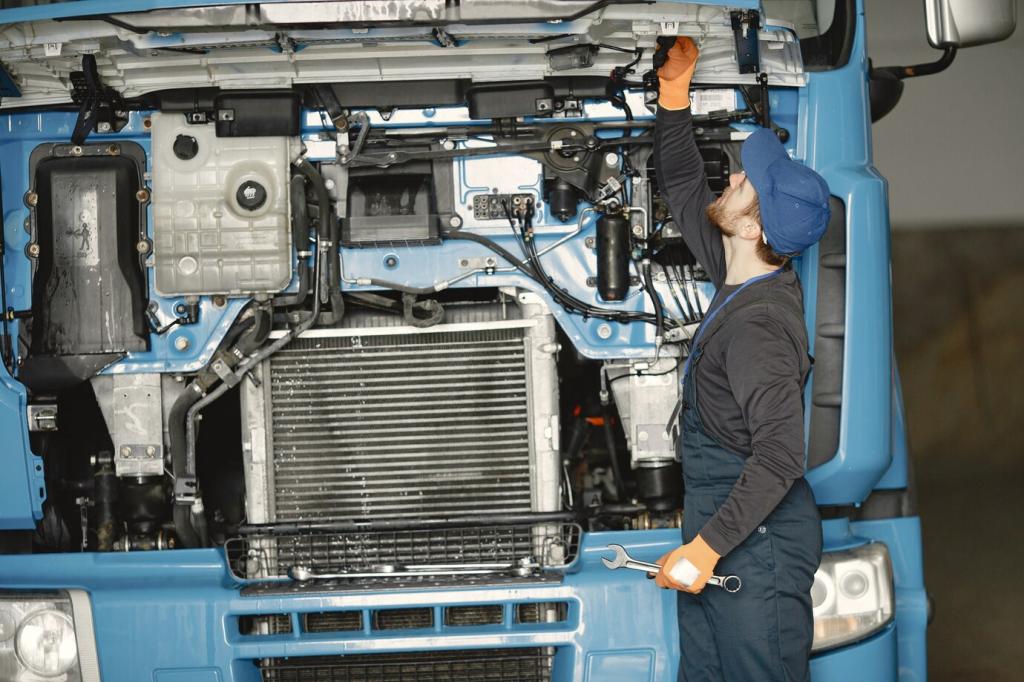Fluids and Leaks: Fast Visual Diagnostics That Save Downtime
Cardboard under overnight vehicles tells a clear story: amber engine oil, red ATF, green or orange coolant, and clear water condensation from A/C. Map drip locations relative to axle lines to quickly determine likely source without a lift.
Fluids and Leaks: Fast Visual Diagnostics That Save Downtime
Use a pressure tester to match the cap rating and watch for slow drops. Inspect plastic end tanks for hairline cracks, and check hose clamps after temperature cycles. A quick UV dye pass can reveal elusive, heat-only seepage.





